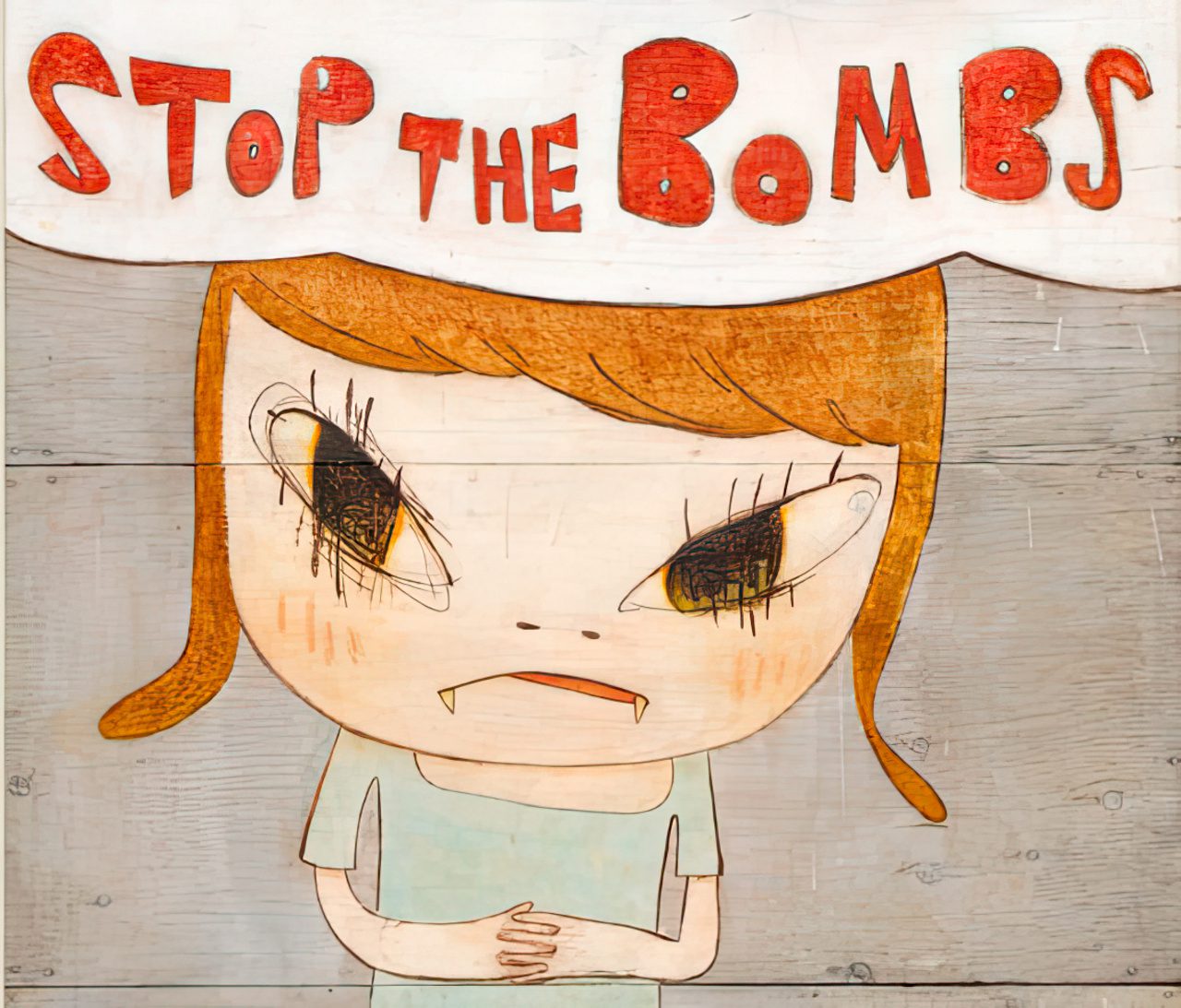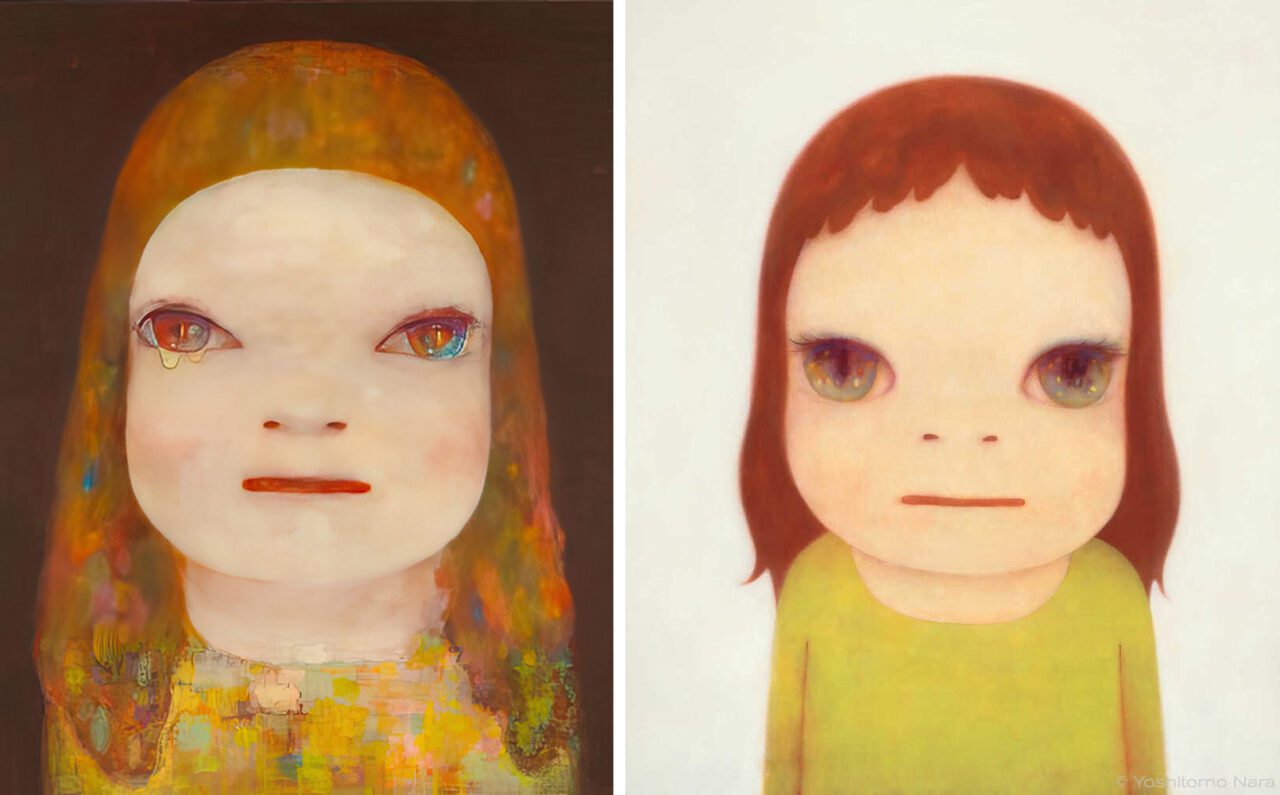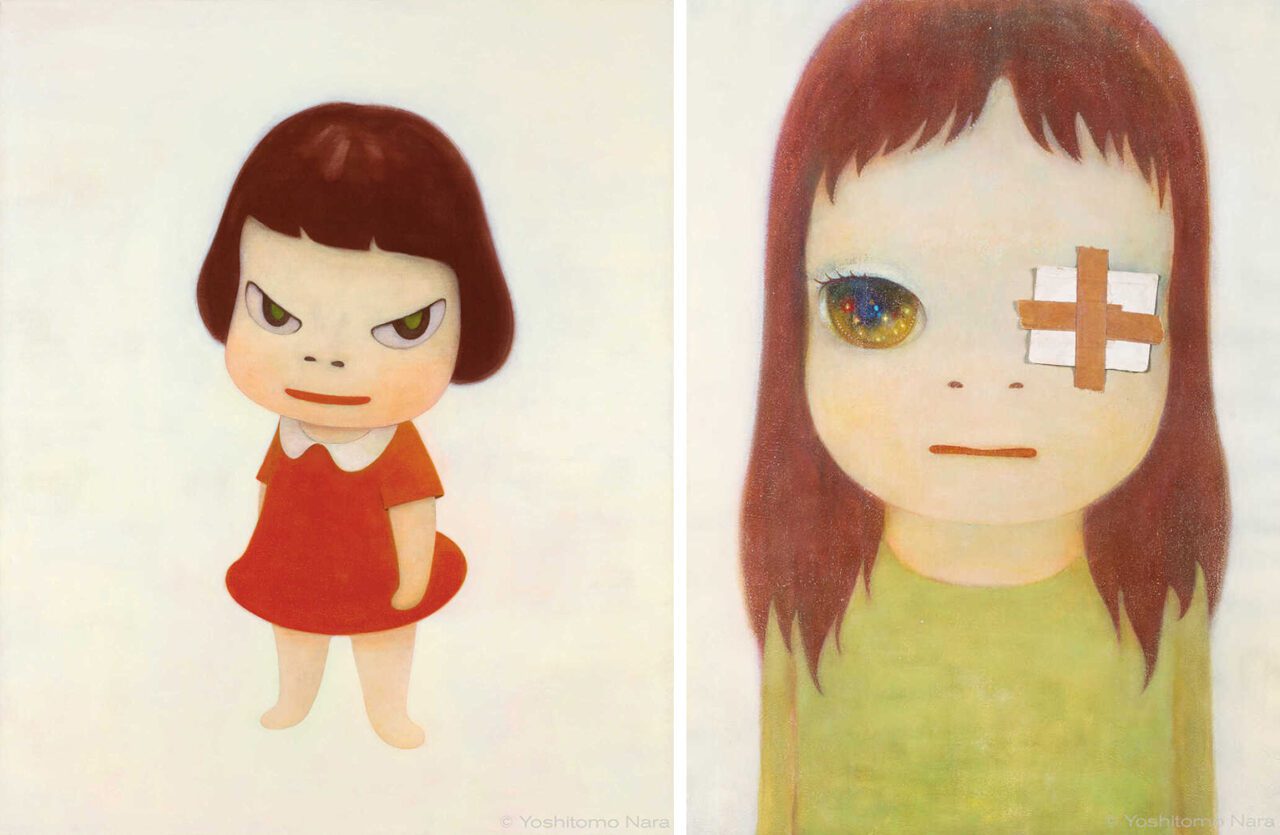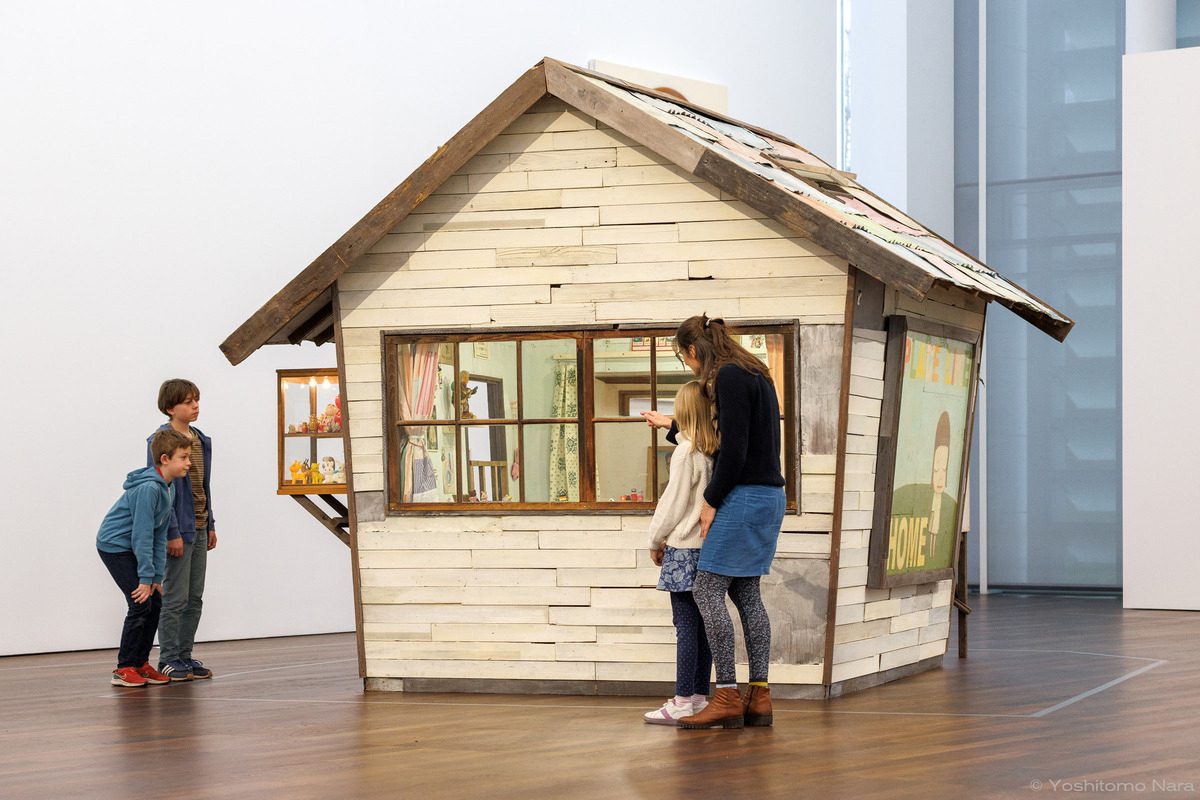PRESENTATION: Yoshitomo Nara
 Yoshitomo Nara is one of the most celebrated representatives of his generation. He received international recognition for his “Angry Girls”: stylized depictions of large-headed girls with captivating eyes and threatening, defiant and angry, or melancholy and insecure expressions that became his signature works—and are now considered icons of contemporary painting. In the exhibition “Yoshitomo Nara”, the artist’s first large retrospective in Germany, the Museum Frieder Burda presents paintings, drawings, sculptures, and installations from the last four decades.
Yoshitomo Nara is one of the most celebrated representatives of his generation. He received international recognition for his “Angry Girls”: stylized depictions of large-headed girls with captivating eyes and threatening, defiant and angry, or melancholy and insecure expressions that became his signature works—and are now considered icons of contemporary painting. In the exhibition “Yoshitomo Nara”, the artist’s first large retrospective in Germany, the Museum Frieder Burda presents paintings, drawings, sculptures, and installations from the last four decades.
By Dimitris Lempesis
Photo: Museum Frieder Burda Archive
While the aesthetics of Nara’s characters are reminiscent of mangas, his figures, animals, and hybrid beings are first and foremost an expression of his own feelings and thoughts. Sources of inspiration include his deep-rooted memories of a lonely childhood with working parents, his love of music and literature, his knowledge of Japanese and European art history, and encounters with people and other cultures. In the exhibition “Yoshitomo Nara”, the artist’s first major retrospective in Germany, the Museum Frieder Burda presents paintings, drawings, sculptures, and installations spanning four decades. Yoshitomo Nara’s works are closely connected to his own personal story. They tell of his lonely childhood in Japan; the isolation he experienced as a student in Germany; his political rebellion; his love of underground rock, folk, and punk music; his predilection for literature, cinema, and nature; and his interest in the history of Japanese and European art. Visitors are invited to experience and decipher Nara’s intriguing artwork from the past forty years: from the defiant Angry Girls, whose gaze is focused confrontationally on the viewer, to his meditative figures that seem vulnerable and ethereal, all of which provide insight into the artist’s inner workings. Yoshitomo Nara is deeply interested in humanity: his work explores and integrates subject matter such as home, community, and nature, and how the three fit together. Although the aesthetics of his powerful portraits are reminiscent of the Japanese cult comics known as mangas, his figures, animals, and hybrid creatures are first and foremost a reflection of his own memories and feelings. In these works, the artist explores his own experiences of childhood, much of which was marked by loneliness and isolation as a child with working parents. Due to his parents’ long working days, Nara spent much time alone and began to draw. His love of literature, his knowledge of Japanese and European art history, and his encounters with other cultures were a source of inspiration to him. In addition, his love of music plays a central role in his life. Nara is still deeply rooted in the music that he listened to as a child on a radio he had made himself. His favorite station was the Far East Network (FEN), which provided the program for the American troops stationed in Japan during the Vietnam War. The radio station broadcast folksongs by American singer-songwriters including Bob Dylan with dismissive antiwar messages, melancholy sounds of the blues, and English and Irish folk music from England and Ireland. Although he did not understand the foreign lyrics, Nara perceived the sounds in a sensuous way. In combination with the images on the album cover, he comprehended the music in his own way and translated it into drawings. With the threatening, defiant, angry, melancholy, and insecure “Angry Girls”, which earned him international acclaim, Nara countered the kawaii style that was so popular in Japan. Kawaii, meaning “cute” in Japanese, is an aesthetic concept that capitalizes on sweet and innocently childlike motifs. Nara countered this principle with rebellious and recalcitrant protagonists. These figures symbolize the artist’s pacifist, socially critical, and cosmopolitan attitude that was shaped by his in-depth examination of Japan’s historical role during World War II. Nara’s political awareness, his humanitarian concerns, and his antiwar sentiments have their origins in the counterculture and folk and blues music of the 1950s and 1960s, which provided the soundtrack for the civil rights and freedom movements. Yoshitomo Nara’s works are closely connected to his own personal story. They tell of his lonely childhood in Japan; the isolation he experienced as a student in Germany; his political rebellion; his love of underground rock, folk, and punk music; his predilection for literature, cinema, and nature; and his interest in the history of Japanese and European art. Visitors are invited to experience and decipher Nara’s intriguing artwork from the past forty years: from the defiant Angry Girls, whose gaze is focused confrontationally on the viewer, to his meditative figures that seem vulnerable and ethereal, all of which provide insight into the artist’s inner workings. Yoshitomo Nara is deeply interested in humanity: his work explores and integrates subject matter such as home, community, and nature, and how the three fit together. Although the aesthetics of his powerful portraits are reminiscent of the Japanese cult comics known as mangas, his figures, animals, and hybrid creatures are first and foremost a reflection of his own memories and feelings. In these works, the artist explores his own experiences of childhood, much of which was marked by loneliness and isolation as a child with working parents. Due to his parents’ long working days, Nara spent much time alone and began to draw. His love of literature, his knowledge of Japanese and European art history, and his encounters with other cultures were a source of inspiration to him. In addition, his love of music plays a central role in his life. Nara is still deeply rooted in the music that he listened to as a child on a radio he had made himself. His favorite station was the Far East Network (FEN), which provided the program for the American troops stationed in Japan during the Vietnam War. The radio station broadcast folksongs by American singer-songwriters including Bob Dylan with dismissive antiwar messages, melancholy sounds of the blues, and English and Irish folk music from England and Ireland. Although he did not understand the foreign lyrics, Nara perceived the sounds in a sensuous way. In combination with the images on the album cover, he comprehended the music in his own way and translated it into drawings. With the threatening, defiant, angry, melancholy, and insecure “Angry Girls”, which earned him international acclaim, Nara countered the kawaii style that was so popular in Japan. Kawaii, meaning “cute” in Japanese, is an aesthetic concept that capitalizes on sweet and innocently childlike motifs. Nara countered this principle with rebellious and recalcitrant protagonists. These figures symbolize the artist’s pacifist, socially critical, and cosmopolitan attitude that was shaped by his in-depth examination of Japan’s historical role during World War II. Nara’s political awareness, his humanitarian concerns, and his antiwar sentiments have their origins in the counterculture and folk and blues music of the 1950s and 1960s, which provided the soundtrack for the civil rights and freedom movements.
Photo: Yoshitomo Nara, Stop the Bombs (Detail), 2019. Acrylic on wood, framed, 149,5 × 117,5 × 7,7 cm. JUMEX Collection, Mexico © Yoshitomo Nara. Courtesy Yoshitomo Nara Foundation
Info: Curator: Daniel Zamani, Museum Frieder Burda, Lichtentaler Allee 8 b, Baden-Baden, Germany, Duration: 23/11/2024-27/4/2025, Days & Hours: Tue-Sun 10:00-18:00, www.museum-frieder-burda.de/

Right: Yoshitomo Nara, No Means No, 2006. Private collection © Yoshitomo Nara, courtesy Yoshitomo Nara Foundation

Right: Yoshitomo Nara, Untitled, 2007. Collection of the artist © Yoshitomo Nara, courtesy Yoshitomo Nara Foundation

Right: Yoshitomo Nara, No War, 2019. Collection of the artist, courtesy of Pace Gallery © Yoshitomo Nara, courtesy Yoshitomo Nara Foundation


